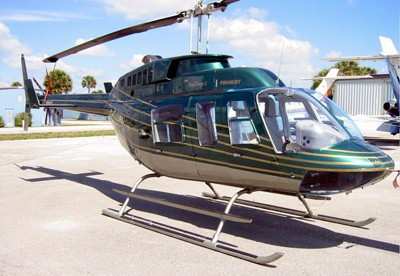Main Rotor Blades May Fail During Flight
The FAA has issued an emergency airworthiness directive (EAD)
(2012-02-51) for Bell Helicopter Textron Canada Limited (Bell)
Model 206L, 206L-1, 206L-3, and 206L-4 helicopters with certain
main rotor blades installed.

Transport Canada Civil Aviation (TCCA), has issued TCCA AD No.
CF-2011-44R1, dated February 1, 2012, to correct an unsafe
condition for the Bell 206L, L-1, L-3, and L-4 helicopters. TCCA
advises that there is no reliable inspection method to detect the
cracks on these blades before blade failure and has mandated a
reduced life limit on all affected blades, and removal from service
for any main rotor blades exceeding the new life limit. This EAD is
prompted by two accident investigations which revealed the main
rotor blade failed because of fatigue cracking. Bell has determined
the fatigue cracks occurred as a result of the use by a Bell
supplier of unapproved manufacturing processes, which have since
been corrected, and are limited to a specific range of part numbers
and serial numbers. These EAD actions are intended to prevent
failure of the main rotor blade and subsequent loss of control of
the helicopter.
These helicopters have been approved by the aviation authority
of Canada and are approved for operation in the United States.
Pursuant to the FAAs bilateral agreement with Canada, TCCA has
notified the agency of the unsafe condition described in the TCCA
AD. The FAA is issuing this EAD because we evaluated all the
relevant information and determined the unsafe condition described
previously is likely to exist or develop in other products of these
same type designs.

Related Service Information
Bell Helicopter Alert Service Bulletin No. 206L-09-159
Revision A, dated November 13, 2009 (ASB 206L-09-159), describes
procedures to identify and mark the affected main rotor blades,
requires a ”recurring wipe check,” and requires
performing a one-time radiographic inspection with the results to
be determined by Bell.
EAD Requirements
This EAD requires reducing the life limit from 3,600 hours
time-in-service (TIS) to 1,400 hours TIS for certain part numbered
and serial numbered main rotor blades, revising the life limit in
the Airworthiness Limitations section of the Instructions for
Continued Airworthiness or maintenance manual, and recording the
revised life limit on the component history card or equivalent
record. There are no significant differences between this EAD and
the TCCA AD.
Before further flight:
- Reduce the life limit of the main rotor blades with a serial
number listed in Table 1 of this EAD from 3,600 hours
time-in-service (TIS) to 1,400 hours TIS; revise the life limit in
the Airworthiness Limitations section of the Instruction for
Continued Airworthiness or maintenance manual; and record the
revised life limit on the component history card or equivalent
record.
- Remove from service any main rotor blade which has accumulated
1,400 or more hours TIS.
Special flight permits are prohibited.
The Manager, Safety Management Group, FAA, may approve AMOCs for
this EAD. Send your proposal to: Sharon Miles, Aerospace Engineer,
FAA, Rotorcraft Directorate, Regulations and Policy Group, 2601
Meacham Blvd., Fort Worth, Texas 76137, telephone (817) 222 5110,
e-mail sharon.y.miles@faa.gov.
For operations conducted under a Part 119 operating certificate
or under Part 91, Subpart K, the FAA suggests that you notify your
principal inspector, or lacking a principal inspector, the manager
of the local flight standards district office or certificate
holding district office, before operating any aircraft complying
with this EAD through an AMOC.
 ANN's Daily Aero-Term (04.26.24): DETRESFA (Distress Phrase)
ANN's Daily Aero-Term (04.26.24): DETRESFA (Distress Phrase) ANN's Daily Aero-Linx (04.26.24)
ANN's Daily Aero-Linx (04.26.24) Airborne 04.22.24: Rotor X Worsens, Airport Fees 4 FNB?, USMC Drone Pilot
Airborne 04.22.24: Rotor X Worsens, Airport Fees 4 FNB?, USMC Drone Pilot Airborne 04.24.24: INTEGRAL E, Elixir USA, M700 RVSM
Airborne 04.24.24: INTEGRAL E, Elixir USA, M700 RVSM Airborne-NextGen 04.23.24: UAVOS UVH 170, magni650 Engine, World eVTOL Directory
Airborne-NextGen 04.23.24: UAVOS UVH 170, magni650 Engine, World eVTOL Directory




